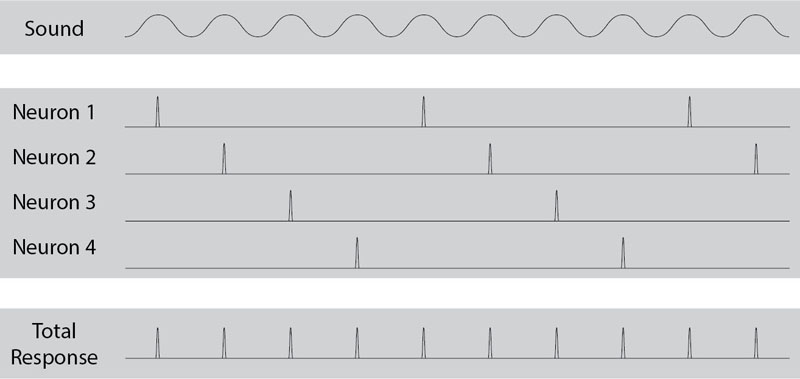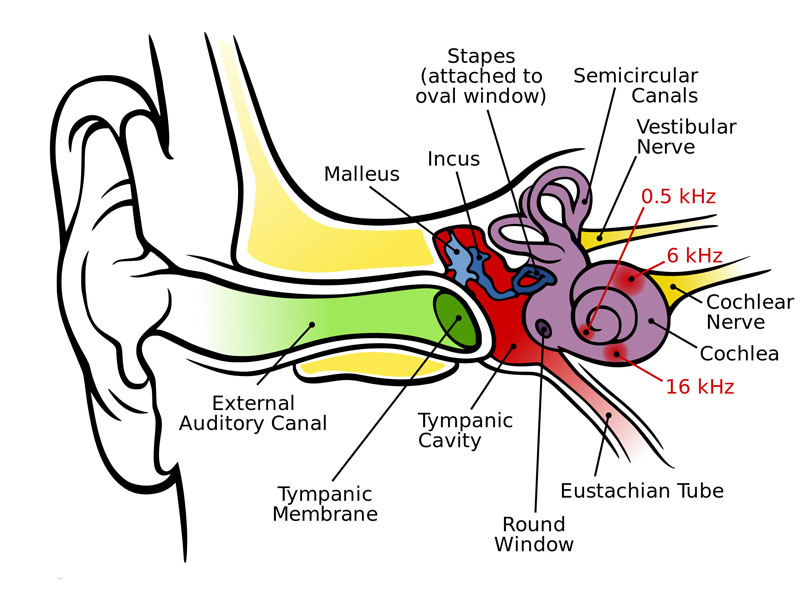Auditory Perception
- Place theory is a theory of hearing which states that our perception of sound depends on where each component frequency produces vibrations along the basilar membrane.
- Tonotopy is the spatial arrangement of where sounds of different frequency are processed in the brain.
- The temporal theory of hearing states that our perception of sound depends on the temporal patterns with which neurons respond to sound in the cochlea.
- Volley theory states that groups of neurons of the auditory system respond to a sound by firing action potentials slightly out of phase with one another so that when combined, a greater frequency of sound can be encoded and sent to the brain to be analyzed.
- Binaural hearing, along with frequency cues, lets humans and other animals determine the direction and origin of sounds.
- A sound shadow is an area through which sound waves fail to propagate, due to topographical obstructions or disruption of the waves via phenomena such as wind currents, buildings, or sound barriers.

Volley Theory of Hearing demonstrated by four neurons firing at a phase-locked frequency to the sound stimulus. The total response corresponds with the stimulus.

The human ear and frequency mapping in the cochlea. The three ossicles incus, malleus, and stapes transmit airborne vibration from the tympanic membrane to the oval window at the base of the cochlea. Because of the mechanical properties of the basilar membrane within the snail-shaped cochlea, high frequencies will produce a vibration peak near the oval window, whereas low frequencies will stimulate receptors near the apex of the cochlea (locations for three frequencies indicated schematically). Information from the cochlear receptor cells is transmitted to the cochlear nuclei via the 8th cranial nerve, and on through the midbrain to the cortex.